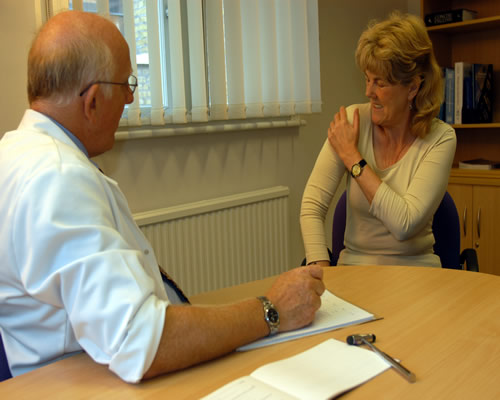Some readers may be interested in the background learned articles that backup any information on the website. Here is a selection I find useful.
Clinical Standards Advisory Group (CSAG) Report on Back Pain
The Clinical Standards Advisory Group was set up in 1991 as an independent source of expert advice to the UK Health Ministers and to the NHS on standards of clinical care for, and access to and availability of services to, NHS patients. In October 1992 CSAG was asked by the Health Ministers to "advise on the standards of clinical care for, and access to and availability of services to, NHS patients with back pain".
More details on this report is here.
The role of osteopathy
The CSAG Report lays stress on the key role of physical therapy in the management of simple backache and sees physical therapy as having four components:
- symptomatic treatment to control pain
- manipulation
- rehabilitation
- education on prevention and personal responsibility for continued management.
Such manual therapy is provided by osteopaths, chiropractors and physiotherapists and the CSAG Report acknowledges that osteopaths and chiropractors, and to a lesser extent physiotherapists, have specific professional training and expertise in manipulation. The CSAG Report states that there is no convincing evidence that lumbosacral X-rays are necessary before manipulation.
In the management of simple backache CSAG sees good clinical practice and standards of care represented by the following target times following referral by the GP to the physical therapist:
- urgent - should be seen within 2 hours
- routine - should be seen within two weeks
- all patients with acute back pain, from whatever cause, to be seen by a manual therapist before they have been off work for six weeks
United Kingdom back pain exercise and manipulation (UK BEAM) randomised trial: effectiveness of physical treatments for back pain in primary care
BMJ 2004;329:1377 (11 December), doi:10.1136/bmj.38282.669225.AE (published 19 November 2004)
Conclusions Relative to "best care" in general practice, manipulation followed by exercise achieved a moderate benefit at three months and a small benefit at 12 months; spinal manipulation achieved a small to moderate benefit at three months and a small benefit at 12 months; and exercise achieved a small benefit at three months but not 12 months.
To read the whole report click http://www.bmj.com/content/329/7479/1377.full?ehom=.
Dry-Needling of Muscle Motor Points for Chronic Low-Back Pain
C.C. Gunn, W.E. Milbrandt, A.S. Little, and K.E. Mason; Spine (Phila Pa 1976). 1980 May-Jun;5(3):279-91.
Meta-Analysis: Acupuncture for Low Back Pain
Eric Manheimer , MS ; Adrian White , MD, BM, BCh ;Brian Berman , MD ; Kelly Forys , MA ; Edzard Ernst , MD, PhD; Annals of internal Medicine, April 19, 2005 vol. 142 no. 8 651-663
Effectiveness of manual therapies: the UK evidence report
Gert Bronfort 1 , Mitch Haas 2 , Roni Evans 1 , Brent Leininger 1 and Jay Triano 3 ,4
National Institute of Clinical Excellence Guideline - Low Back Pain - Early management of persistent non specific low back pain.
http://www.nice.org.uk/guidance/cg88


